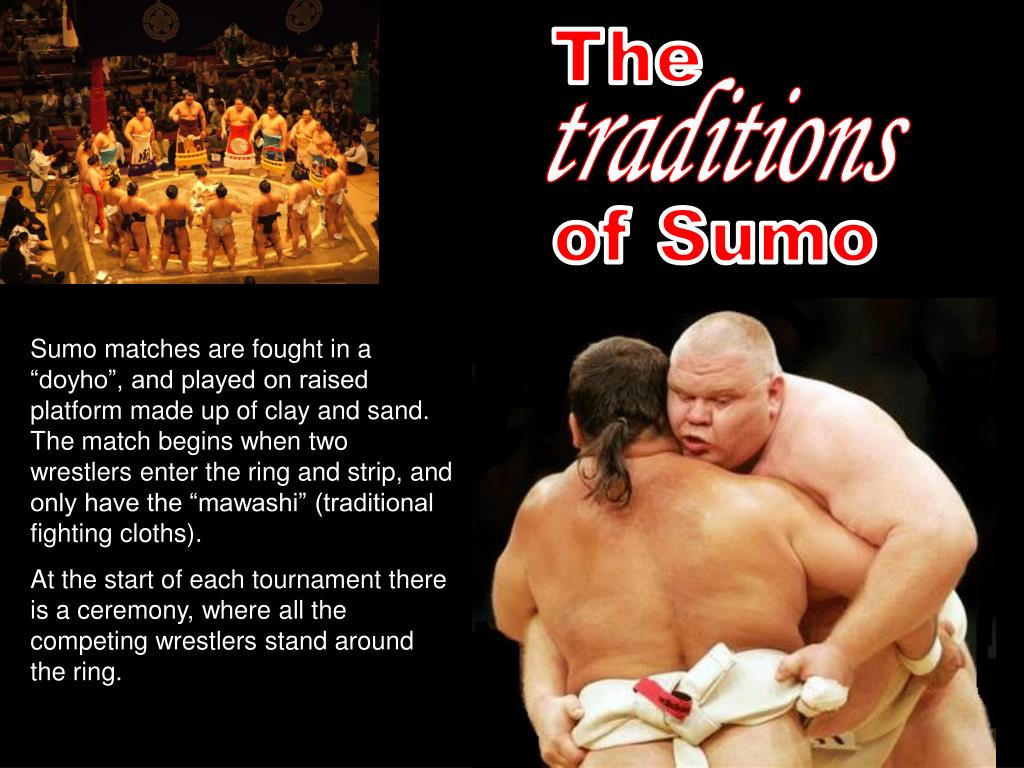

The Nihon Shoki, published in 720, dates the first sumo match between mortals to the year 23 BC, when a man named Nomi no Sukune fought against Taima no Kuehaya at the request of Emperor Suinin and eventually killed him, making him the mythological ancestor of sumo. The professional sumo observed by the Japan Sumo Association is called ōzumō ( 大相撲), or 'grand sumo'. For example, udezumō ( 腕相撲, 'arm sumō') means ' arm wrestling', and yubizumō ( 指相撲, 'finger sumō') means ' finger wrestling'. Sumō is also a general term for wrestling in Japanese. Here, the first character means 'corner', but serves as a phonetic element as one reading of it is sumi, while the second character means 'force'. There is also an alternate spelling of 角力, which can be found in the Nihon Shoki. The characters from sumai, or sumō today, mean 'to strike each other'.

The written word goes back to the expression sumai no sechi ( 相撲の節), which was a wrestling competition at the imperial court during the Heian period. The spoken word sumō goes back to the verb sumau/sumafu, meaning 'compete' or 'fight'.

Despite this setback, sumo's popularity and general attendance has rebounded due to having multiple yokozuna (or grand champions) for the first time in a number of years and other high-profile wrestlers grabbing the public's attention. These have also affected the sport's ability to attract recruits. Most sumo wrestlers are required to live in communal sumo training stables, known in Japanese as heya, where all aspects of their daily lives-from meals to their manner of dress-are dictated by strict tradition.įrom 2008 to 2016, a number of high-profile controversies and scandals rocked the sumo world, with an associated effect on its reputation and ticket sales. Life as a wrestler is highly regimented, with rules regulated by the Japan Sumo Association. Many ancient traditions have been preserved in sumo, and even today the sport includes many ritual elements, such as the use of salt purification, from Shinto. It is considered a gendai budō, which refers to modern Japanese martial arts, but the sport has a history spanning many centuries. Sumo originated in Japan, the only country where it is practiced professionally and where it is considered the national sport. 'striking one another') is a form of competitive full-contact wrestling where a rikishi (wrestler) attempts to force his opponent out of a circular ring ( dohyō) or into touching the ground with any body part other than the soles of his feet (usually by throwing, shoving or pushing him down). Sumo ( Japanese: 相撲, Hepburn: sumō, Japanese pronunciation:, lit.


 0 kommentar(er)
0 kommentar(er)
